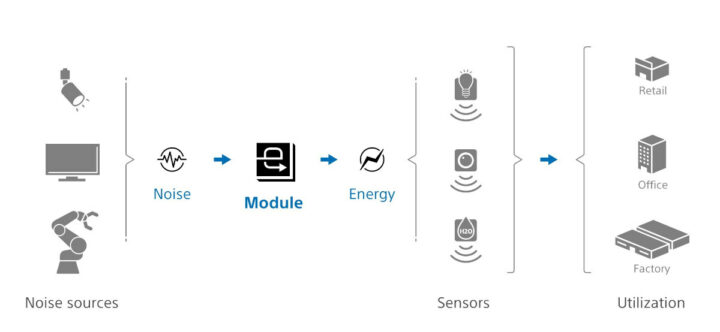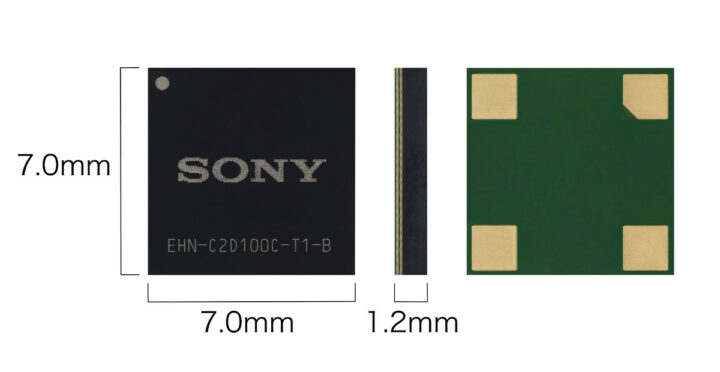Sony Semiconductor Solutions Corporation (SSS) has developed an energy harvesting module that uses electromagnetic wave noise energy to power IoT devices.
The new module leverages Sony’s tuner development process to generate power from electromagnetic wave noise from robots inside factories, monitors and lighting in offices, monitors and TVs in stores and homes, etc. in order to provide a stable power supply needed to run low-power IoT sensors and communications equipment.
The tiny 7×7 mm module uses the metal parts of electronic devices that serve as the source of electromagnetic wave noise as part of an antenna and employs a rectifier circuit in order to convert electromagnetic wave noise in a range of several Hz to 100 MHz into electrical energy and supply power to low-power consumption IoT sensors and communications equipment or to charge batteries.
The module harvests energy from electronic equipment that generates a significant amount of electromagnetic wave noise such as household appliances, computers, lighting equipment, vending machines, elevators, automobiles, and industrial equipment, and delivers several dozen μW to several dozen mW of power, just enough to power some IoT sensors.

Sony says power can be harvested from this type of device as long as they are powered and even if they are not in active use, enabling continuous energy harvesting contrary to alternative solutions using sunlight, electrical waves, and temperature differences.
Continuous energy harvesting also enables other applications such as predictive maintenance to find out whether a light is working normally or a device is about to fail, for example in robots with built-in motors.
It seems great, but it looks like Sony’s energy harvesting module is not quite ready to be commercialized just yet, as the press release states that “SSS looks forward to working with partners from various industries to develop products based on this technology, which shows promise across a wide variety of applications”.
Thanks to TLS for the tip.

Jean-Luc started CNX Software in 2010 as a part-time endeavor, before quitting his job as a software engineering manager, and starting to write daily news, and reviews full time later in 2011.
Support CNX Software! Donate via cryptocurrencies, become a Patron on Patreon, or purchase goods on Amazon or Aliexpress





